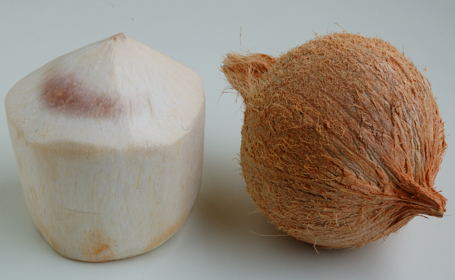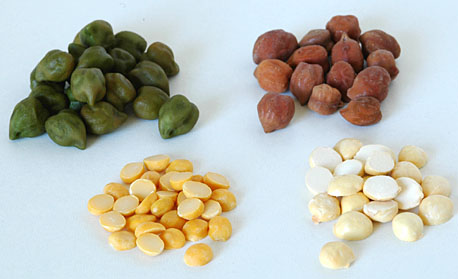
Sugar cane Jaggery and Palm Jaggery ~ For this week’s Indian Kitchen
Jaggery and sugar are India’s gifts to the world!
I do not know how many of you know this but ancient Bharath (India) pioneered the sugar making technique. Harold McGee, the author of entertaining and educational cookbook “The Science and Lore of the Kitchen” describes in detail how thousands of years ago, India enamored the world with the taste and technique of sugar making. This is the first ‘spice’ that was exported from India. These ancient traditions still continue and along with sugar, jaggery is also prominently used in Indian cooking.
There are two types of jaggery available in India as far as I know. One is from sugarcane and the second type is from Palmyra palm tree (toddy palm or taadi chettu) . Sugarcane juice (for cane jaggery) sap (for palm jaggery) from trees is boiled down hours and hours. And the concentrated liquid is poured into molds to dry. Depending on the mold used, you would see jaggery in different shapes- cylindrical blocks, smooth round balls and half spheres etc. Depending on the sweetness level and color, the jaggery is two types. Pale gold colored one – this is what’s available in most of the Indian grocery shops here in US. This is popular mainly because of my generation’s penchant for all things pale colored. Good, decent taste, I use it regularly in my cooking. But my parents and grand parents back in India prefer the dark colored jaggery. Aging or curing the freshly prepared jaggery for sometime will result in potently sweet, distinct flavored dark colored jaggery. For them, pale colored ones are inferior in taste. I agree that there is a significant difference between those two types. Because of this fact, often in our homes for marriages and special occasions, the dark colored jaggery is preferred to prepare sweetmeats.
When it comes to taste – jaggery has a distinct taste. English language, perhaps the most powerful tool and expression of current day culture, has millions of words but none of which are really good enough I think and there is no word in English that completely serves to describe the taste of Jaggery. If you have tasted one, cooked with one, smelled one, then you know the subtle sublime scrumptiousness Jaggery brings to a recipe. Otherwise, a translation attempt ‘tastes like molasses, brown sugar or maple syrup‘ is either an incomplete and false hint, for anyone who doesn’t know the taste of jaggery, or is simply annoyingly weak and unevocative.
Jaggery stores well. Once in 3 or 4 months, I buy a big block of jaggery from Indian stores. I break it using a knife and hammer. Place the knife in the middle of the block and lightly hit it with hammer. Jaggery breaks into pieces. Further gentle tapping with hammer results in small pieces and powdered jaggery. I keep what I need in a small container in kitchen cabinet and store the remaining pieces for later use in a Ziploc bag in the refrigerator. Just with 15 minutes work, I would be set for at least 3 months. I use jaggery in different traditional Indian preparations – to sweeten the curry sauces, for pappu chaaru and also to prepare sweets like payasam, kheer and cashew sweets etc. Back in home, in India, people often prepare sweets with jaggery. Particularly for naivedyam, jaggery sweets are preferred to sugar sweets. Our elders, they may not have degrees, but they do know where the ingredients come from and how they are made. They avoid sugar in naivedyam because after all sugar is processed by using dead animals bone meal.
One complaint I often hear about jaggery is presense of sand or dust particles in it. The reason for it is jaggery is still prepared in ancient way, in the fields. There will be harvesting of sugar cane going on one side and on the other end concentrating the sugar cane juice will be going on. Air carries some particles into this liquid. The farmers do filter the liquid before pouring into molds but one or two particles always find a way to join in. For some, these particles are reason why they avoid jaggery and prefer sugar. For me, I prefer sand particles to bonechar contamination anytime of the day. Atleast I know how to deal with jaggery impurities – melt and strain.
For the month of December, for Jihva – the online food blogging event, we the food bloggers are going to celebrate the goodness of Jaggery. All thanks to the new mom and the host of JFI, Kay, for her wonderful selection. Whether you are an already ordained admirer of jaggery by birth or it is your first time, join and (re)discover the subtle, sublime scrumptiousness of jaggery cooking, both in sweet and savory recipes.






















